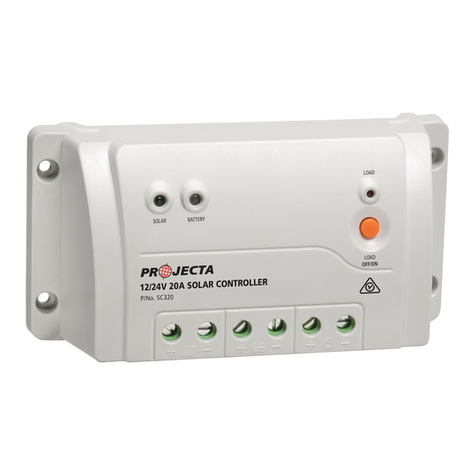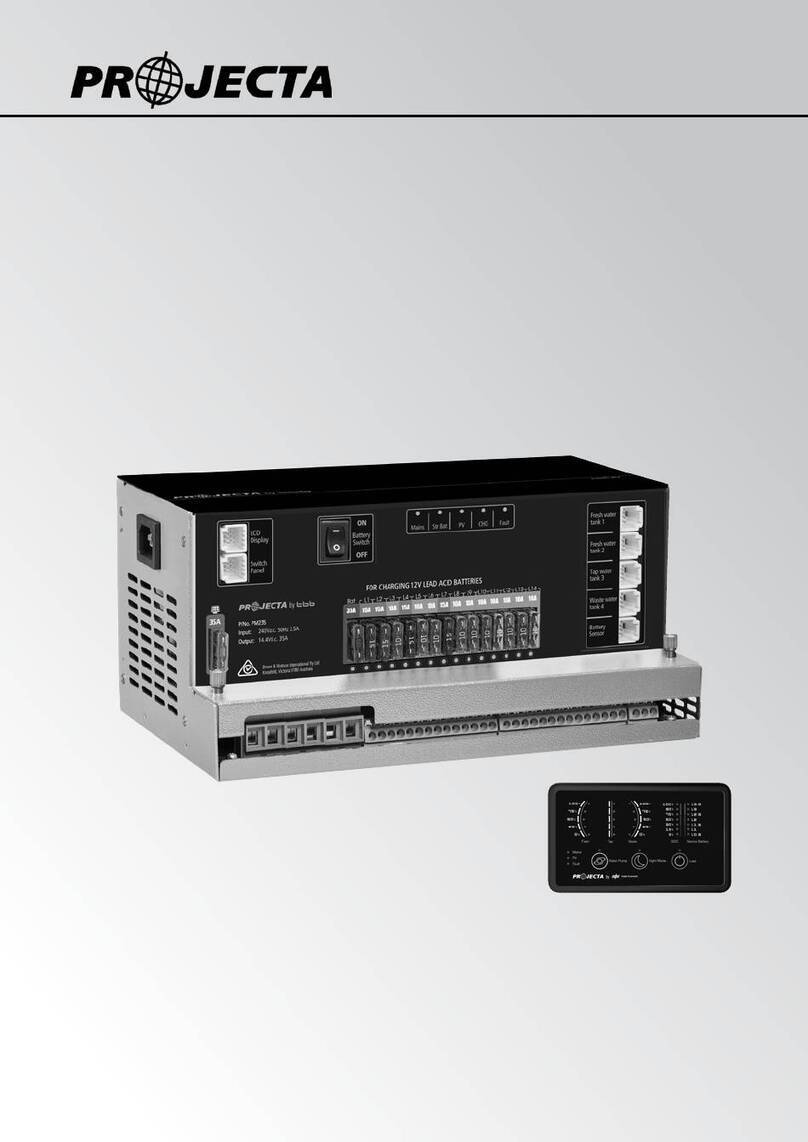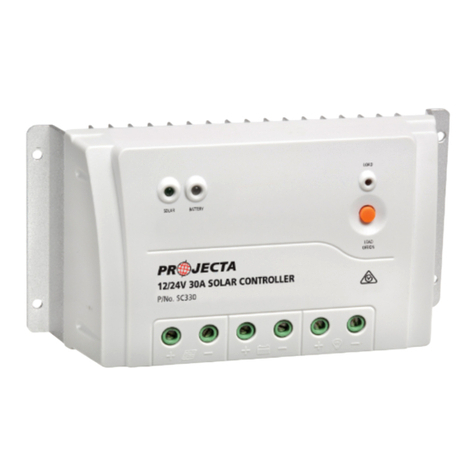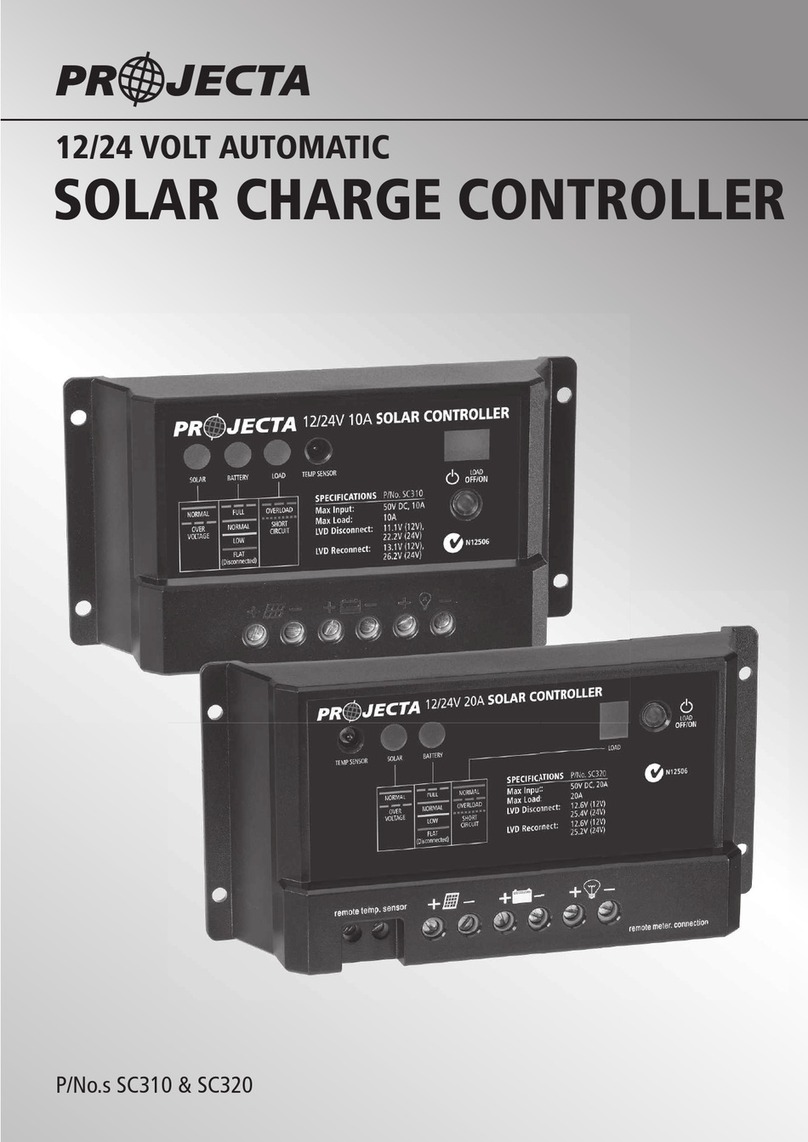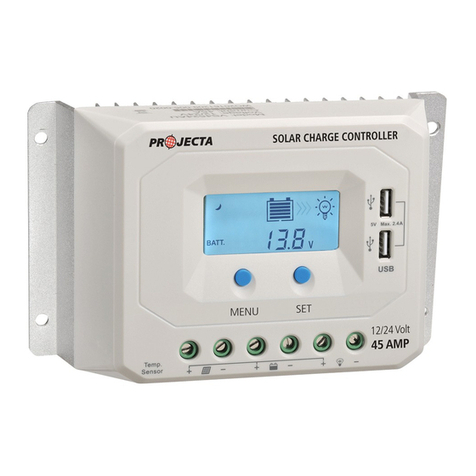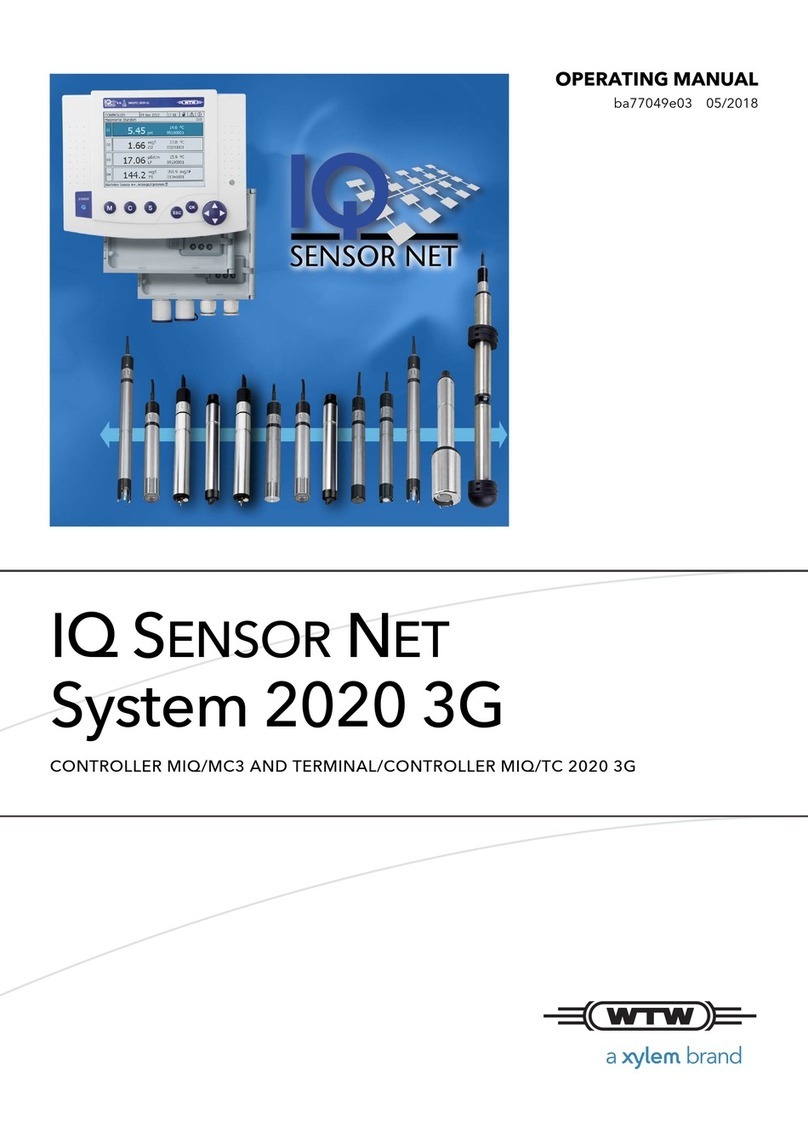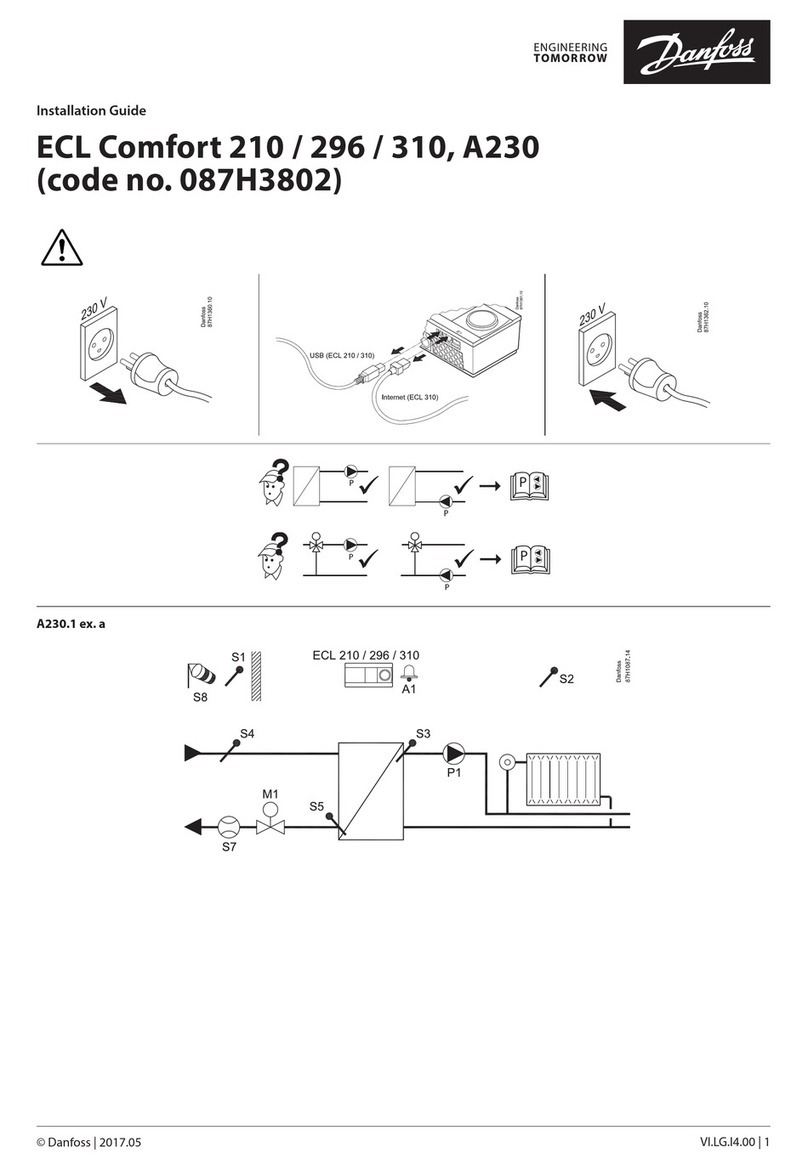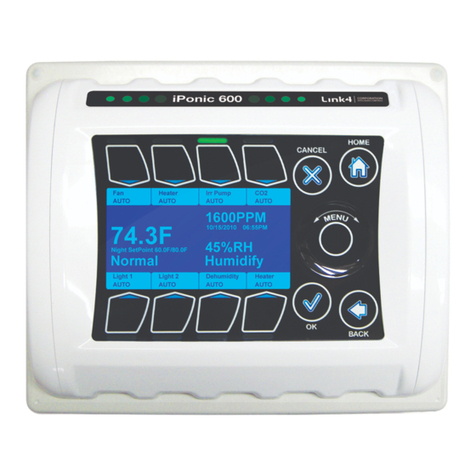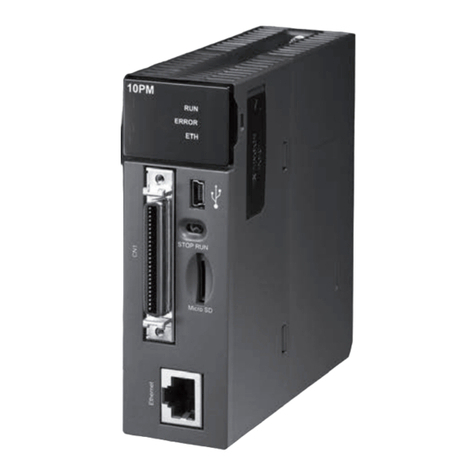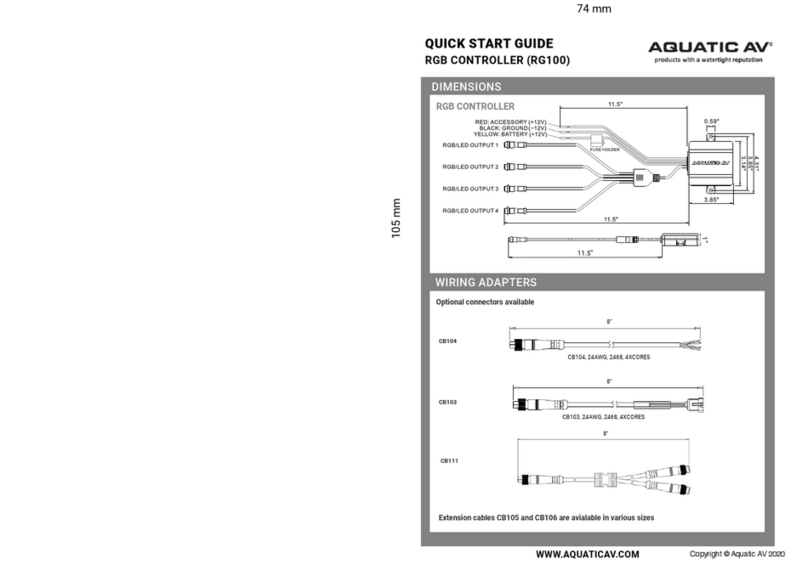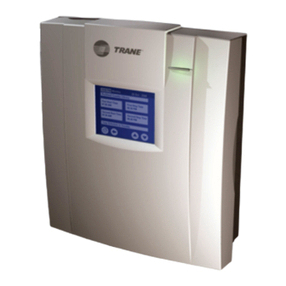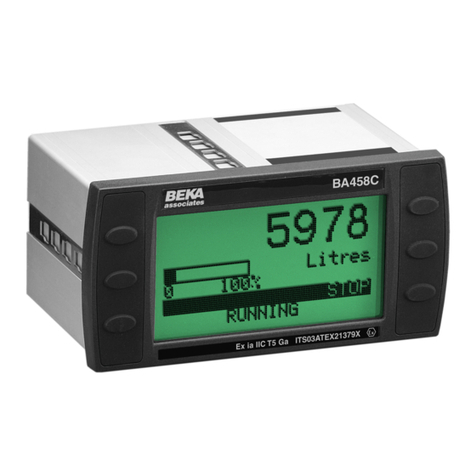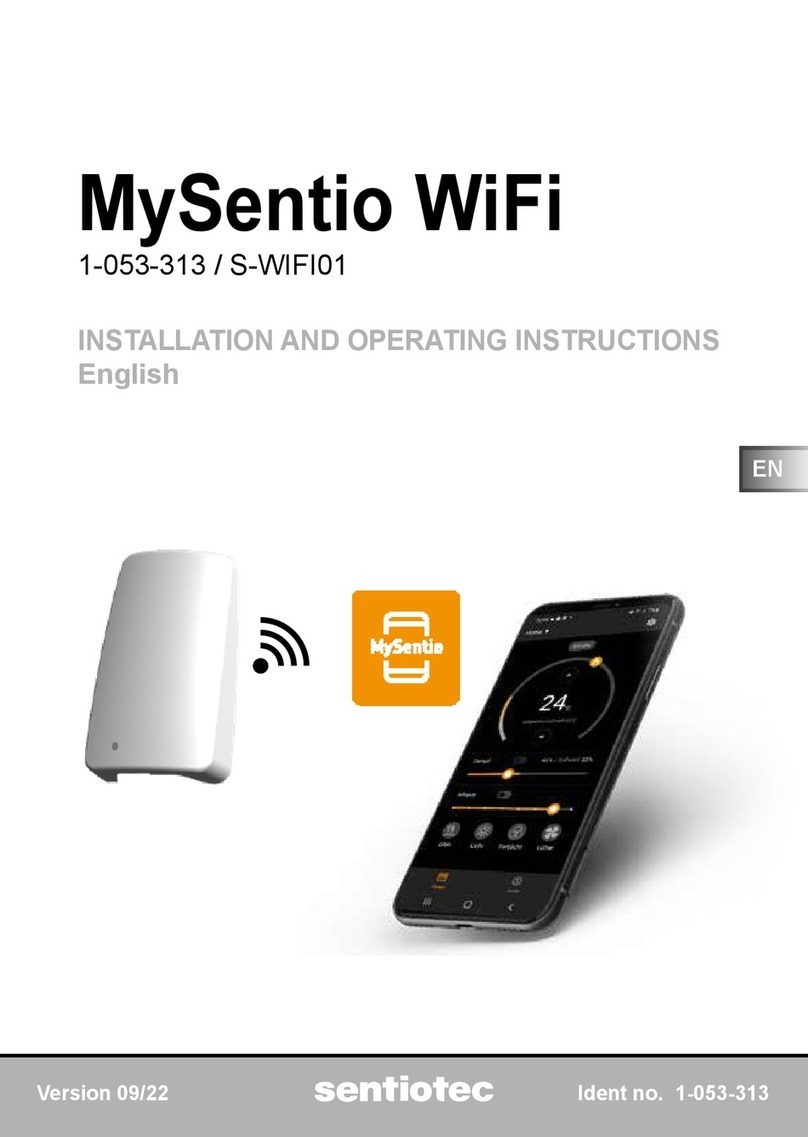Projecta INTELLI-START IS3000 User manual

1
INTELLI-START
12/24V LITHIUM JUMP STARTER
P/No. IS3000, IS5000


3
WARNING
Please read this manual thoroughly before use and store in a safe place for future reference.
• This jump starter has been designed for vehicles with 12V DC and 24V DC electrical systems only.
• This jump starter contains batteries that are non-replaceable – during charging, the battery must be
placed in a well-ventilated area (for chargers for batteries that release gases into the atmosphere
during normal charging).
• Risk of explosive gas. Working in the vicinity of car batteries can be dangerous. Batteries release
explosive gases during normal operation, charging and jump starting. Before using this jump starter,
read and follow the instructions carefully. Follow all manufacturer’s instructions and warnings of the
vehicle’s battery and other equipment being used.
• Jump start 12V DC or 24V DC automotive lead acid batteries ONLY. Do not use to jump start dry cell
batteries commonly found in household appliances. These batteries may burst and cause serious injury
and/or property damage.
• Do not smoke, use matches, use a cigarette lighter, or allow a spark or ame near the battery.
• Do not allow metal to come in contact with the battery terminals. It may spark or short-circuit the
battery and cause an explosion/re.
• Remove rings, bracelets, necklaces, and watches when working at the vehicle and/or jump starting a
vehicle.
• The jump starter contains a sealed non-spillable Lithium Iron Phosphate battery (LiFePO4). This must be
disposed of properly.
• Ensure correct polarity when connecting clamps to vehicle.
• The jump starter is not designed to be left outside for extended periods of time or submerged in water.
• Do not store the jump starter in temperatures above 45˚C or below -10˚C as this can affect the health
of the internal battery.
• Always wear eye protection when operating the jump starter.
• Although the jump starter has been designed to protect the battery, do not drop the jump starter or
attempt to pierce it in anyway. This can result in an explosion and or re.
• If the jump starter is physically damaged in any way, it should not be used.
• Not to be used by persons (including children) with reduced physical, sensory or mental capabilities, or
lack of experience and knowledge, unless they have been given supervision or instruction – children
being supervised not to play with the appliance – only to be used with the power supply unit provided
and it must only be supplied at SELV (safety extra low voltage, less than 60V DC).
• Do not allow the positive (red) clamp and the negative (black) clamp to touch each other when in
override mode, or 12/24V DC mode.
• When in manual override, pay careful attention not to reverse-connect clamp or short-circuit.
• Make sure to have strong clamp connection to starting battery to maximise jump starting current.
• The EMF (electromagnetic eld) during jump starting might interfere with medical devices. For
example, implanted pacemakers and debrillators might contain sensors that respond to magnets and
radios when in close contact. To avoid any potential interactions with these types of medical devices,
please keep a safe distance away from the jump starter. Consult with a physician and the medical
device manufacturer for specic guidelines.
• The clamps may get hot during jump starting, it is recommended to wear gloves to prevent burns.

4
IMPORTANT CHARGING INFORMATION
• Charge the jump starter prior to use, using the supplied 240V AC/DC charging dock ISCD3500 and
15VDC 3A AC charging adapter ISCA3500. This may take up to 8 to 12 hours depending on the model.
• Fully recharge the jump starter after every use to ensure the jump starter is ready for use in case of an
emergency.
• Do not allow the jump starter battery to become very at. If the display shows ‘Low Battery’ ensure the
jump starter is charged immediately to ensure the maximum battery life. Refer to “ERROR AND ALARM
MESSAGES” section.
• To extend the life of the jump starter, do not let the battery charge level fall below 1 bar.
• To extend the life of the jump starter battery, do not charge in an environment above 45˚C or below
0˚C.
KEY FEATURES
RAPID RECHARGE TECHNOLOGY (RRT)
• The Lithium Iron Phosphate (LiFePO4) battery can rapidly recover charge from the vehicle’s alternator
following a successful jump start. Leaving the clamps connected to the vehicle’s battery for 40 seconds
will recharge the jump starter to 100% of the original charge status. Once the jump starter is fully
charged, the RRT will shut off to avoid overcharging.
LITHIUM SAFE
• Intelli-Start Lithium Iron Phosphate (LiFePO4) batteries are specically designed for cranking therefore
purpose built for jump starting and are safer than Lithium Cobalt (LiCoO2) battery types. The LiFePO4
batteries provide more starts and have an operational life of up to 2000 battery cycles.
JUMP STARTING PERFORMANCE
• The IS3000 is suitable for starting most 12V DC vehicles up to 12 litre petrol and diesel as well as all
24V petrol and diesel vehicles.
• The IS5000 is suitable for starting most 12V DC vehicles up to 16 litre petrol and diesel as well as all
24V petrol and diesel vehicles.
• With 40 seconds of rapid recharge after each jump start, the jump starter will not need to be recharged
during the working day.
• It is recommended that the jump starter is charged via the supplied 240V AC/DC charging dock
ISCD3500 and 15VDC 3A AC charging adapter ISCA3500 to maximise the jump starter performance.
INTUITIVE COLOUR DISPLAY
• The intuitive colour display makes the jump starter easy for anyone to use with step-by-step
instructions.
PREMIUM SPARK FREE CLAMPS
• Ensures safe jump starting.
DESIGN FOR EASY TRANSPORTATION
• With an ergonomically designed handle, the jump starter is portable and compact compared to a
conventional bulky lead acid jump starter.
HIGH PERFORMANCE BATTERY
• The high-quality Lithium Iron Phosphate (LiFePO4) battery delivers instant starting power to petrol and
diesel vehicles. The battery offers longer life, better power density and is inherently safer (compared
to lead acid batteries and other lithium batteries e.g., Lithium Cobalt (LiCoO2)). It is certied to meet
International Standard UN 38.3.
ULTRA LONG SHELF LIFE
• The jump starter features a special circuit designed to prevent the internal battery from consuming
current over extended period.

5
AUTOMATIC CELL-BALANCED CHARGE CONTROL
• Automatically stops charging when the battery is fully charged. This initiates maintenance mode,
keeping the battery fully charged and ready for use. You can leave the unit on charge indenitely
without the risk of overcharging.
DOCKING STATION FOR 240V AC
• A slim and stable docking station is provided to allow the jump starter to be charged from a 240V AC
outlet.
SOLDERED HIGH CURRENT CONNECTIONS
• All wired connections within jump starter are crimped and bolted to ensure maximum reliability and
current output.
REVERSE POLARITY PROTECTION & ALARM
• Prevents sparking from accidental reverse connection.
• The jump starter displays and sounds an alarm when the jump starters clamps are connected
incorrectly. Refer to “ERROR AND ALARM MESSAGES” section.
OVER-TEMPERATURE PROTECTION
• The jump starter has different layers of temperature protection. Should the unit overheat by continuous
or numerous jump starts, the unit will shut off automatically.
OVER-VOLTAGE PROTECTION
• Before the jump starter activates the jump start function, it will sound an alarm if the vehicle battery is
higher than 30V DC.
SURGE PROTECTION
• The jump starter features built-in surge protection so you can safely jump start vehicles with EFI
(electronic fuel injection) and computer management systems.
PRODUCT OVERVIEW
ISCD3500 AC/DC Charging Dock
ISCA3500 15VDC 3A AC Charging
Adapter

6
LCD DISPLAY SCREEN LAYOUT
P/NO. IS3000 IS5000
BATTERY
BATTERY CAPACITY 2 x 6.0Ah at 12.8V
(153.6Wh)
2 x 12.0Ah at 12.8V
(307.2Wh)
BATTERY CHEMISTRY Lithium Iron Phosphate (LiFePO4)
PEAK AMPS 3000A 4500A
CLAMP POWER 12V DC Vehicle: 1000A,
24V DC Vehicle: 850A
12V DC Vehicle: 1500A,
24V DC Vehicle: 1000A
BATTERY CYCLES 2000
JUMP STARTER LEADS
LENGTH 1500mm Positive & Negative
CABLE 50mm² / AWG 0 75mm² / AWG 00
CLAMP POLARITY PROTECTION MCU controlled with mechanical relay
OVERLOAD PROTECTION MCU controlled with mechanical relay
RECHARGING
VIA Charging docking station
SOURCE AC/DC charger 15V DC 3A max output
MAIN CHARGE Internally cell-balanced constant current
MAINTENANCE CHARGE Recharging if battery voltage drops to 13.2V DC
SOURCE RRT via vehicle starting battery
DC CHARGING Up to 8 hours Up to 12 hours
JUMP START CONNECTION VOLTAGES
VEHICLE VOLTAGE RANGE 1 – 14.6V DC (12V DC Vehicle), 14.7 – 30V DC (24V DC Vehicle)
DIMENSIONS, WEIGHT & ENVIRONMENTAL
HEIGHT 326mm
LENGTH 366mm
WIDTH 170mm
WEIGHT 10.6kg 13.5kg
OPERATING TEMPERATURE -20˚C to 60˚C
OPERATING TEMPERATURE (CHARGING) 0˚C to 45˚C
STORAGE TEMPERATURE (LONG TERM) -10˚C to 45˚C
Jump starter battery status
Message overview icon
Jump starter suggested action
The LCD display shows the jump starter status and supports
its operation. In addition to the primary function the LCD
display shows the following icons:
• Jump starter battery status icon FULL/DEPLETED/LOW
SPECIFICATIONS
Battery Battery Battery
full depleted low

7
JUMP STARTING INSTRUCTIONS
• Instructions for negatively earthed vehicles only (most vehicles after 1970 are negatively earthed).
• Before jump starting a vehicle, it is recommended to ensure the jump starter is fully charged.
JUMP STARTING
STEP INSTRUCTION DISPLAY
1 The jump starter should be charged for around 8 to 12 hours depending on the
model prior to rst use and as soon as possible after each use.
2 If the jump starter has been fully charged, skip to step 4
3 Before connecting the jump starter to a battery/vehicle, check the jump starter
battery status by pressing the button.
If the jump starter starts up and shows the welcome screen momentarily following
with “Connect clamps” screen, you can proceed to next step.
The small battery icon should be in green or at least yellow.
4 Before connecting the jump starter clamps to the vehicle, turn the vehicle’s ignition
to OFF.
5 Connect the red positive (+) clamp to the positive (+) terminal of the vehicle
battery, then connect the black negative (-) clamp to the negative (-) terminal of
the battery or a non-moving metal part of the engine block.
Make sure to connect clamps rmly to battery terminals to maximise jump start
current and the battery terminals are clean from grease and dust build-up.
DO NOT CONNECT TO FUEL LINE. Always double check you have
proper connections.
6 The jump starter automatically detects the vehicle battery voltage and selects the
required voltage source.
Note:
• Given the correct clamp voltage, the user can manually select the
operating voltage by pushing and holding for 3 seconds or button. Upon
manual selection of the voltage, the button will ash and needs to be pressed
again for conrmation, then the jump start can commence.
7Turn the vehicle’s ignition to ON and start the vehicle.
8 After the engine has started, leave the clamps connected for a minimum of 40
seconds to allow the jump starter RRT to charge the unit. Once the jump starter is
fully charged, the RRT will shut off to avoid overcharging.
Note:
• The jump starter will not switch OFF as long the clamps are connected to the
vehicle battery.
• RRT (Rapid Recharge Technology) may take more than 40 seconds depending
how depleted the jump starter battery is.
9 To turn off the jump starter, press the power button
10a To disconnect the jump starter from the battery/vehicle, disconnect the black
negative (-) clamp from the negative battery pole of the battery. Disconnect the red
positive (+) clamp from the positive battery pole of the battery.
10b If clamps are left connected after vehicle has been jump started for an extended
period, the jump starter will ask user to disconnect clamps.

8
OVERRIDE MODE
• Under normal conditions, the jump starter automatically selects the jump start voltage.
• However, the user is required to manually select output voltage when the vehicle battery voltage is
between 0 to 1V DC.
WARNING
• Do not allow positive (+)/red and negative (-)/black clamps to touch each other whilst jump starter is
in override mode.
• Pay careful attention when enabling manual override; reverse-connection and short-circuit protections
are disabled.
CHARGING
Note: It is recommended to fully charge the jump starter before the rst use, as the jump starter
is shipped only partially charged.
VEHICLE BATTERY VOLTAGE BETWEEN 0 TO 1V DC
STEP INSTRUCTION DISPLAY
1Press and hold the button for a 12V DC vehicle system
2Press and hold the button for a 24V DC vehicle system
STEP DETAIL DISPLAY
1 Plug the output of the AC charging dock into a 240V AC socket. Once
the AC dock is plugged into a 240V AC source, you can place the jump
starter onto the charging dock.
2 The battery charging screen will be shown when the jump starter is
being charged by the 240V AC dock.
3 When the jump starter is fully charged, it will display “CHARGING
COMPLETE”.
4 The jump starter will display the “CHARGER TIMEOUT” screen if the
charging cycle cannot be completed in 24 hours. The typical charging
time is 4 to 6 hours depending on the model if the battery is at 50%
state of charge.

9
UNDERSTANDING THE JUMP STARTER
ERROR AND ALARM MESSAGES
ERROR TYPE ERROR DETAIL ERROR DISPLAY
LOW BATTERY The internal battery voltage of the jump starter is
too low for a jump start. Please charge the jump
starter via dock charging immediately.
REVERSE
POLARITY
The clamps are reverse connected to the vehicle
battery. The clamps should be disconnected and
reconnected in the correct polarity.
OVERVOLTAGE The vehicle battery voltage is above 30V. Please
disconnect the clamp and ask a qualied
mechanic to check the vehicle’s alternator.
JUMP STARTER
TIMEOUT
The jump starter will display the “JUMP STARTER
TIMEOUT” screen if in jump start mode for more
than 10 minutes.
SHORT CIRCUIT The jump starter detected the clamps are
short-circuited. The jump starter will not jump
start until the short circuit is resolved. Please
disconnect the clamps and check the vehicle
electrical system.
OVERLOAD The jump starter detected excess current occurred
(more than the solenoid and internal battery can
handle). Jump starting will be disabled. Please
disconnect the clamps and check the vehicle
electrical system.
FAILURE The jump starter detected a malfunction of
internal contactors or abnormal internal
battery voltage.
LOW
TEMPERATURE
The operating temperature is too low for the
jump starter to perform its required functions.
HIGH
TEMPERATURE
The operating temperature is too high for the
jump starter to perform its required functions.
SURGE
PROTECTION
FAILURE
The jump starter has detected surge
protection system failed. User is advised to
contact customer service.

10
FREQUENTLY ASKED QUESTIONS
Q. Why does my jump starter take so long to charge on the dock?
A. Lower charging rate extends the battery life. The built-in charging circuit provides gentle charge with cell-
balancing for the internal Lithium Iron Phosphate (LiFePO4) battery.
Q. Can the jump starter jump start vehicles at temperature lower than 0°C?
A. If the jump starter operates at temperatures below 0°C, its jump start rated performance will be reduced
but it will start vehicles with lower clamp output requirements.
Q. Why didn’t my jump starter start my vehicle?
A. There could be a number of reasons why the jump starter did not start the vehicle.
Check the following:
• Ensure you have rm clamp connection to battery posts and the battery posts are clean from grease
and dust build-up.
• Ensure the jump starter is fully charged. Press the POWER button to check the battery state of
charge.
• Ensure you have followed the correct operating procedure. Refer to JUMP STARTING INSTRUCTIONS.
• Ensure the vehicle operates at 12V DC or 24V DC.
• If the ambient temperature is low (<15˚C), the jump starter performance will be reduced. Repeat the
jump start routine 1–3 times as the battery performance will improve with each concurrent jump
start.
• Ensure the vehicle being jump started does not require a clamp output of greater than 1000A for 12V
DC batteries and 850A for 24V DC batteries for IS3000 or 1500A for 12V DC batteries and 1000A for
24V DC batteries for IS5000 in order to jump start the vehicle.
• If possible, connect clamps as close as possible to the starter motor without going through long cables.
Q. What is Peak Amps?
A. Peak amps is the maximum current the battery in the jump starter can produce.
Q. What is Clamp Power?
A. Clamp power is the maximum current available at the clamps.


12
IS481
Issue 1 29.5.2023
WARRANTY STATEMENT
Brown & Watson International Pty Ltd (“BWI”) of 1500 Ferntree Gully Road, Knoxeld, Vic., telephone (03)
9730 6000, fax (03) 9730 6050, warrants that all products described in its current catalogue will under
normal use and service be free of failures in material and workmanship for a period of two (2) years from
the date of the original purchase by the customer as marked on the invoice. This warranty does not cover
ordinary wear and tear, abuse, alteration of products or damage caused by the purchaser.
To make a warranty claim the consumer must deliver the product at their cost to the original place of
purchase or to any other place which may be nominated by either BWI or the retailer from where the
product was bought in order that the warranty assessment may be performed. The consumer must also
deliver the original invoice evidencing the date and place of purchase together with an explanation in
writing as to the nature of the claim.
In the event that the claim is determined to be for a minor failure of the product then BWI reserves the right
to repair or replace it at its discretion. In the event that a major failure is determined the consumer will be
entitled to a replacement or a refund as well as compensation for any other reasonably foreseeable loss or
damage.
This warranty is in addition to any other rights or remedies that the consumer may have under State or
Federal legislation.
IMPORTANT NOTE
Our goods come with guarantees that cannot be excluded under the Australian Consumer Law. You
are entitled to a replacement or refund for a major failure and compensation for any other reasonably
foreseeable loss or damage. You are also entitled to have the goods repaired or replaced if the goods fail to
be of acceptable quality and the failure does not amount to a
major failure.
Distributed by
AUSTRALIA
Brown & Watson International Pty. Ltd.
Knoxeld Victoria 3180
Phone: (03) 9730 6000
Fax: (03) 9730 6050
National Toll Free: 1800 113 443
NEW ZEALAND OFFICE
Grifths Equipment Ltd.
19 Bell Avenue,
Mount Wellington,
Auckland 1060, New Zealand
Phone: (09) 525 4575
Intelli-start.com
This manual suits for next models
1
Table of contents
Other Projecta Controllers manuals
Popular Controllers manuals by other brands
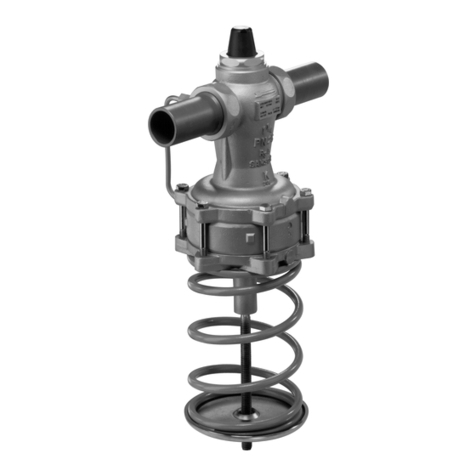
Samson
Samson 46-7 Mounting and operating instructions
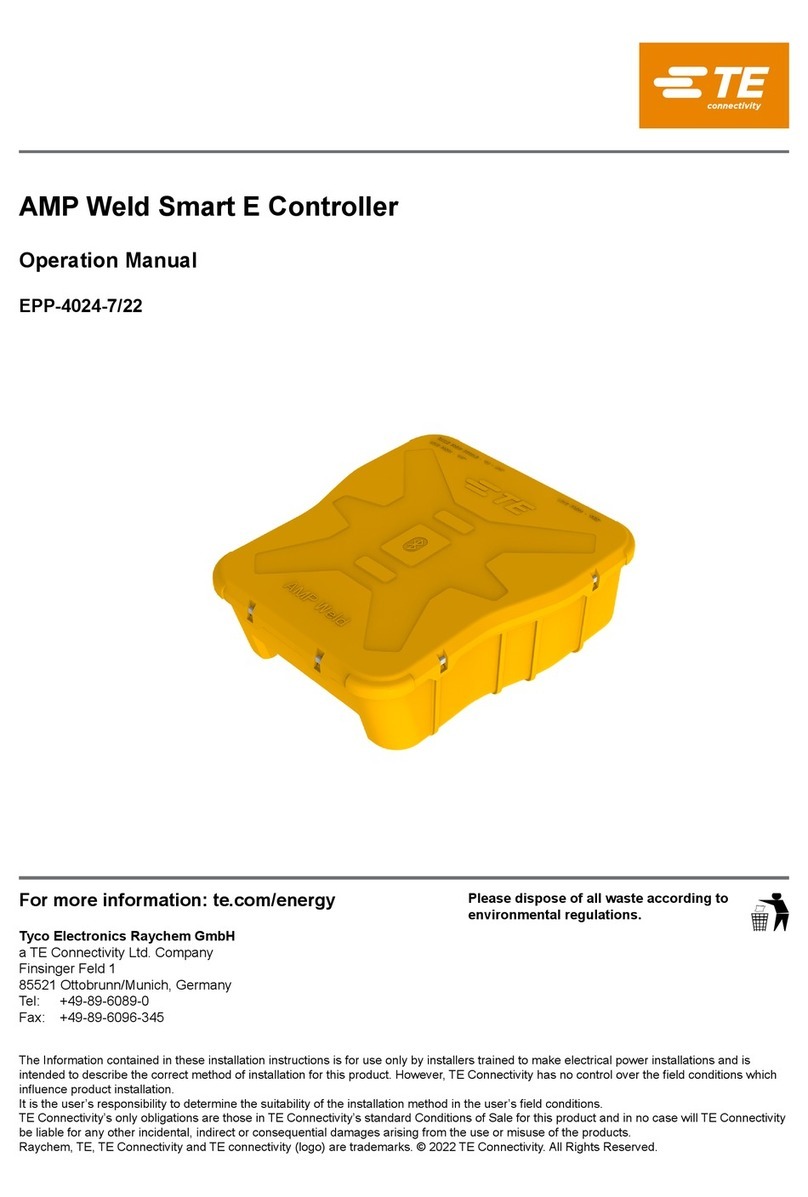
TE Connectivity
TE Connectivity EPP-4024-7/22 Operation manual
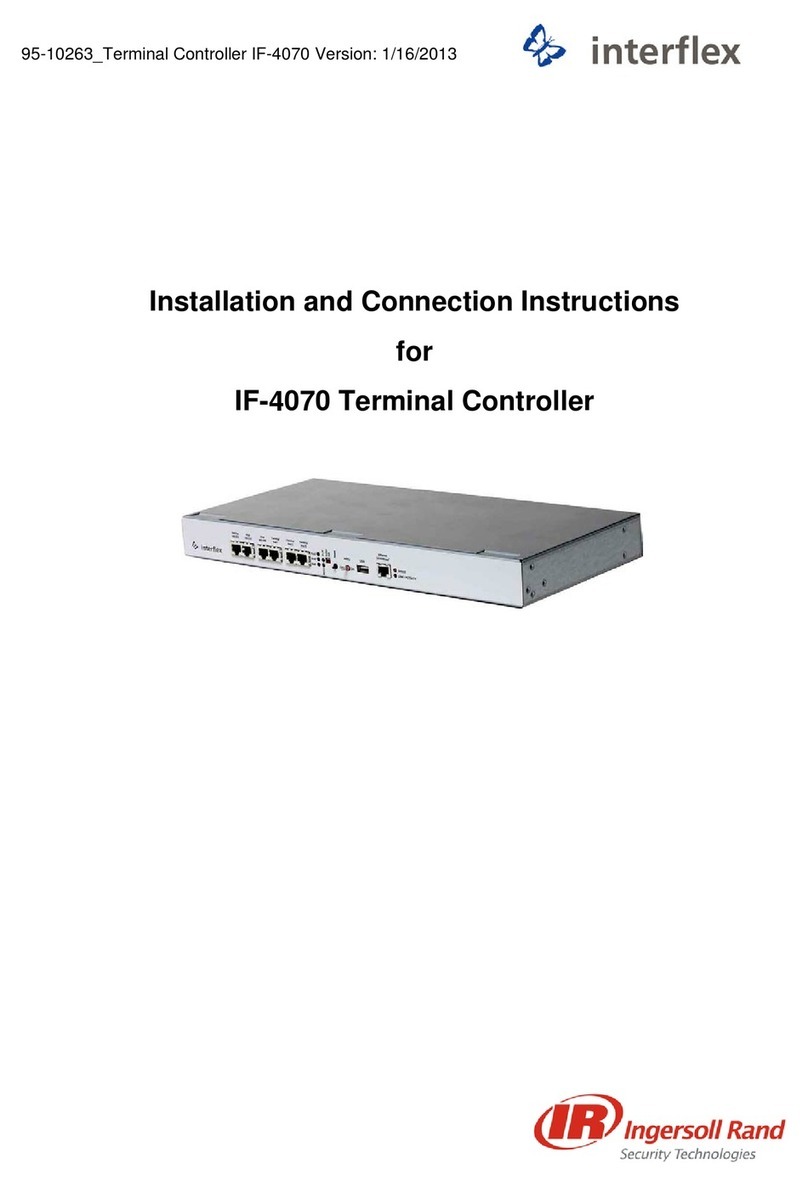
Interflex
Interflex IF-4070 Installation and connection instructions
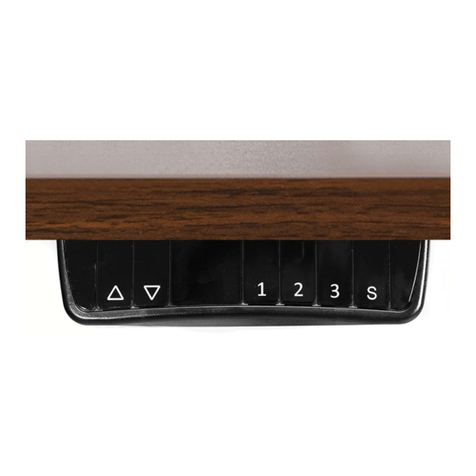
Vivo
Vivo DESK-E3CVB instruction manual
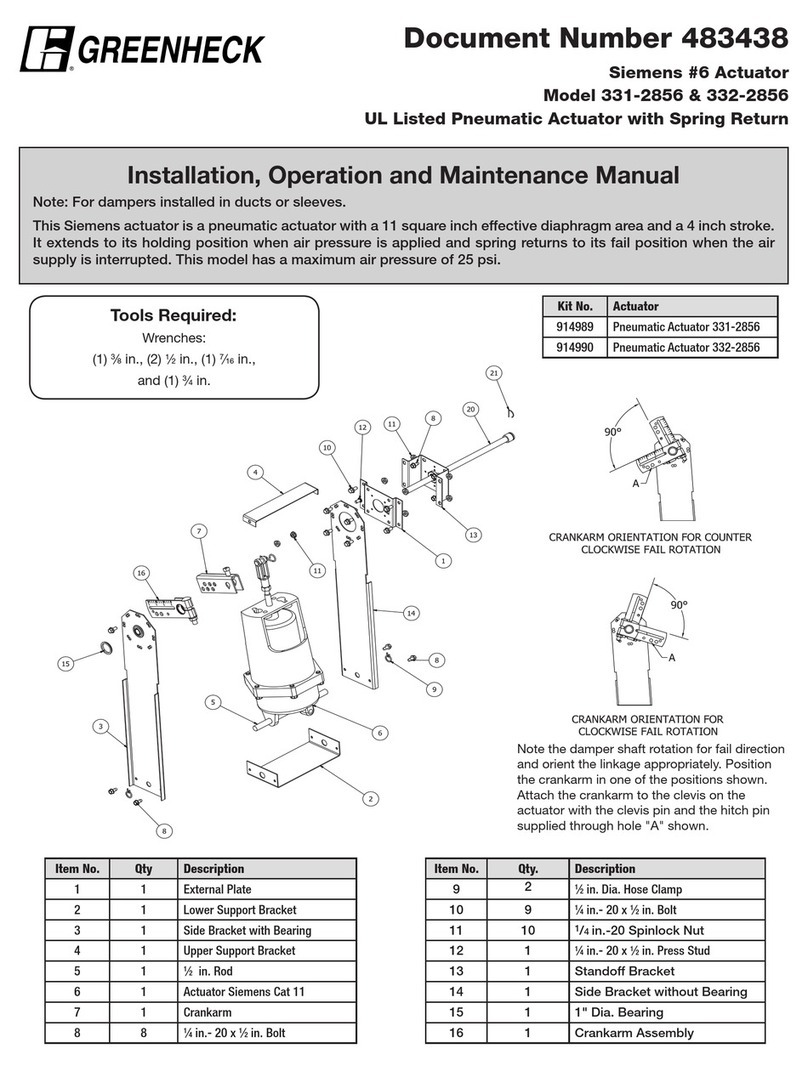
Greenheck
Greenheck 331-2856 Installation, operation and maintenance

NTI
NTI 86129 installation instructions
